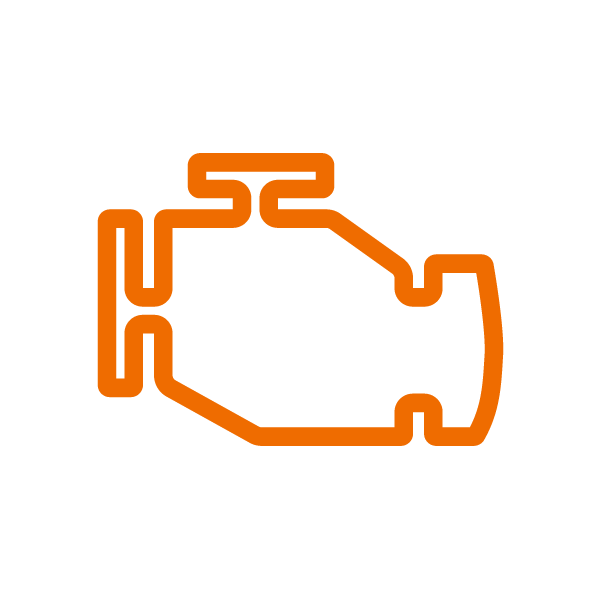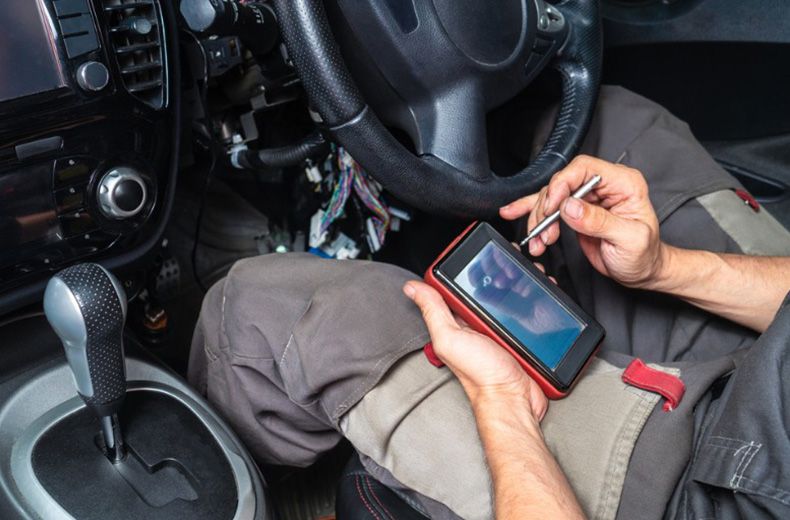Vehicle manufacturers have fitted on-board diagnostic (OBD) systems for many years that provide codes to help identify specific issues.
But what are these systems and what do these codes mean? Here’s our guide to everything you need to know about OBD codes.
Guide contents:
- What is an OBD system?
- What does the OBD system do?
- What is a DTC?
- How do you read a DTC?
- Can I buy an OBD scanner?
- What does my DTC mean?
- Can I rely on the DTC?
- What is an RAC Scan+?
What is an OBD system?
Put simply an OBD system, or on-board diagnostic system, is an on-board computer fitted to your engine that monitors the performance of your car, including its ignition, engine, gearbox and emissions system.
In Europe, all new petrol cars (since 2001) and diesel cars (2003–) have been fitted with an EOBD (European On-Board Diagnostic) system, the European equivalent of the OBD-II system used in US cars.
What does the OBD system do?
When a car’s on-board diagnostics system identifies a problem with the vehicle’s performance, it turns on a dashboard warning light (usually the ‘check engine’ light below) and registers a code that identifies the issue.
This engine code, called a Diagnostic Trouble Code (DTC), is stored in the OBD system and can only be accessed by connecting a scan, or diagnostic tool into the EOBD diagnostic socket and reading the DTC off the display of the scanner.

This light is to let you know that a possible fault has developed in the engine management system or another function and may require attention. When you see this appear, check your handbook for instructions on what action to take for your make and model of vehicle.

RAC sale – up to 33% off*
• Roadside cover from £5.29 a month†
• We get to most breakdowns in 60 mins or less
• Our patrols fix 4/5 breakdowns on the spot

What is a DTC?
Diagnostic Trouble Codes, also known as engine fault codes, are five-digit codes that identify a particular problem in the car. These codes are displayed on the scanning tool when it’s connected to the OBD system.
The five-digit DTC includes one letter usually followed by four numbers (e.g. P1234). Each individual combination of letters and numbers relates to a specific problem within the car, whether a generic issue or a manufacturer-specific error.
A DTC won’t tell you which specific part of your car needs fixing or replacing, but it will tell you - or a mechanic - what you need to test in order to diagnose the issue.
How do you read a DTC?

There are many varitations between manufacturers, so check your vehicle handbook first.
Within the five-digit DTC, one of four letters (P, B, C, U) always comes first and relates to the part of the car that has the issue:
- P – powertrain
- B – body
- C – chassis
- U – network
The second digit (either 0 or 1) relates to whether it’s a general issue (0) or a manufacturer specific problem (1), while the third corresponds to the specific system with the issue, such as the ignition, and can be either a number or letter.
The final two digits are numbers that relate to the specific fault description, and there is no pre-approved key to help decode these final two digits.
Can I buy an OBD scanner?
Yes. If your ‘check engine’ light keeps coming on, or you simply want to be prepared for every eventuality, you can invest in your very own OBD scanner.
Consumer level Scanners can typically cost between £30 and £40, with professional devices costing upwards of £2000 and more, although while you will be able to read your car’s DTCs you’ll still need to check online or consult your garage to work out what the code actually relates to.
What does my DTC mean?
Thousands of different DTCs can be displayed on the OBD system scanner, so it’s best to look online to find out what the particular code means for your specific car.
When searching online, it’s important to check you’re referring to the most up-to-date fault codes to ensure you identify the correct one for your particular vehicle. Cross-reference between online lists if possible.
- Black Box car insurance: what you need to know
- RAC Learner Driver Insurance from 1 day to 5 months
- Avoid car scams and frauds with these top tips
Can I rely on the DTC?
While a DTC will identify where your car’s issue lies, it’s important to remember that it won’t tell you exactly what to replace and if you don’t check it against the correct list of codes you could end up with the wrong diagnosis.
Bear in mind that plenty of websites are still listing out of date or just plain incorrect lists of codes.
To ensure you have a proper understanding of what your car’s DTC means, you might want to get a professional’s opinion, either from one of the RAC patrols or by taking your car into a local garage.
To help you find a mechanic you can trust, the RAC Approved Garage Network only includes garages that provide quality work and exceptional customer service, giving you peace of mind if your car needs attention.
What is RACScan?
Designed and developed in partnership with one of the world’s leading vehicle diagnostic software suppliers, RACScan is the state-of-the-art OBD scanner carried by every one of our patrols.
If you break down, our patrols will be able to plug their RACScan into your car’s diagnostic port and analyse its computer systems on the roadside.
RACScan is the most advanced roadside diagnostic tool of its type. It allows our expert patrols to carry out repairs and also programme new parts right there at the site of your breakdown. This is something which previously could only be done by taking your vehicle to a garage.
Keep your engine running smoothly
The RAC recommends regular oil changes help keep your engine running smoothly and extend its life. Book an RAC Mobile Mechanic today.


Do you have any questions? Leave them in the comments below.

RAC sale – up to 33% off*
• Roadside cover from £5.29 a month†
• We get to most breakdowns in 60 mins or less
• Our patrols fix 4/5 breakdowns on the spot








